More actions
| Eronidas | |
|---|---|
 | |
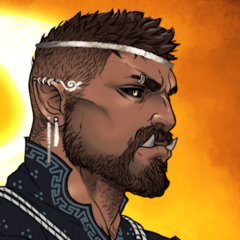 | |
| Nation State | No singular representative State |
| Ruler | Commonly City-State Confederations |
| Other Present | Regalian Empire, Eronidas Realms |
| Languages | Vasar, Vaman, Common, Anglisch |
| Religion | Draconism, Unionism |
| First Recorded | 15,000 BC |
| Demonym(s) | Eronidas |
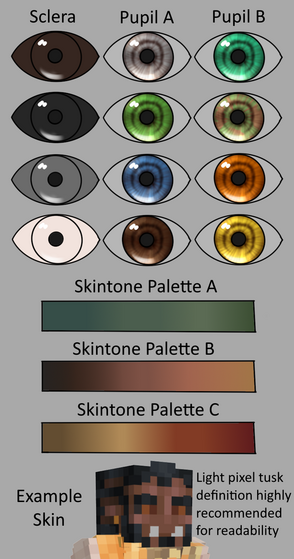
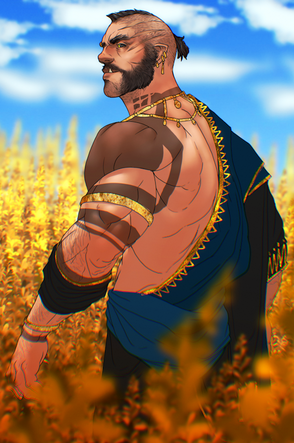
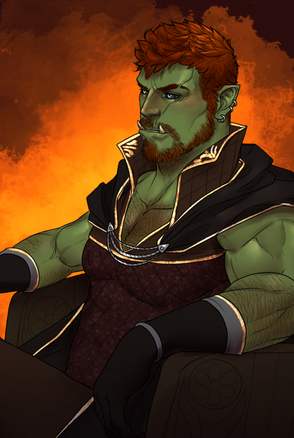
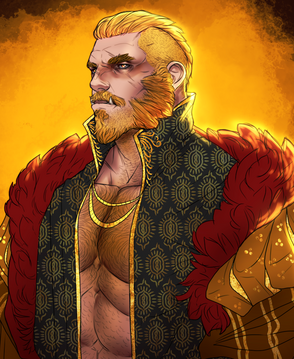
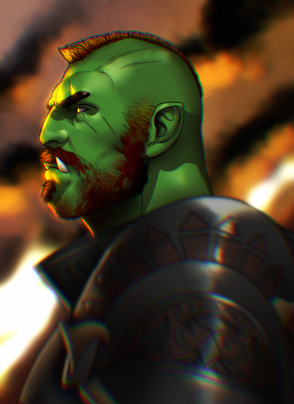
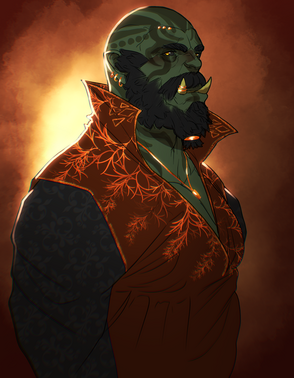
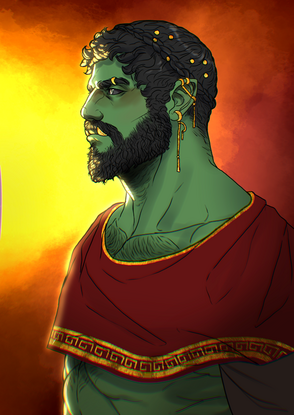
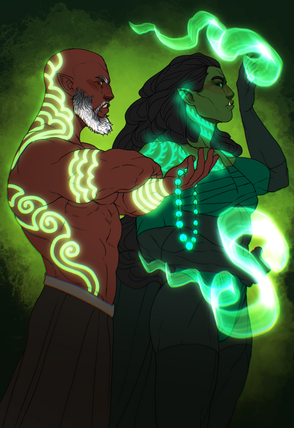
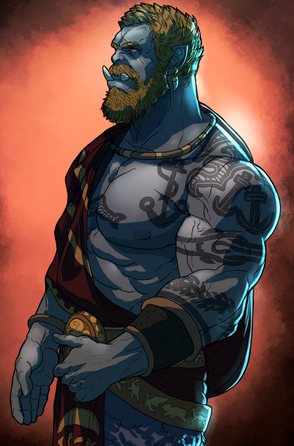
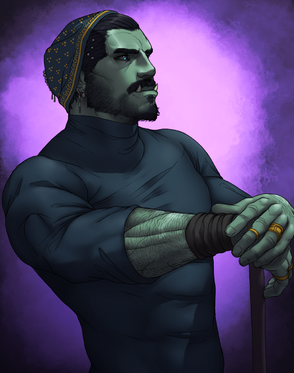
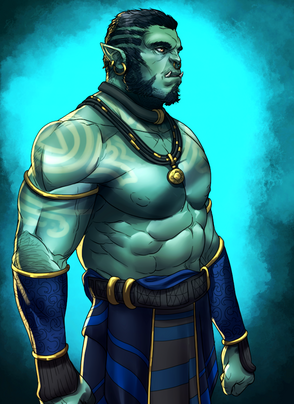
The Eronidas are a heritage of soldiers, gladiators, warrior-poets, and philosophers, with equally disciplined and wild societies that reflect them having no physical equal on the battlefield. The Eronidas are also an extremely widespread people of Aloria, having large societies both in their sovereign states and as populations within other nations like the Regalian Empire. Their cultures are extremely varied due to their adaptability to their environment, seeking to establish a form of strength-based hegemony, but then also not pushing that hegemony into tyranny like the Empires of old, and being able to easily adapt to other forms of government, especially as one of the founding people of the Regalian Empire. There exists an Ailor saying: “Wherever an Ailor or Elf goes, whether for good or bad, an Eronidas follows”. This saying remains true, in that Eronidas can be friends for life that are hard to get rid of, or enemies that never surrender their relentless pursuit for honor and victory. As with anything on MassiveCraft Lore, this page contains all the crucial information required to play an Eronidas. Each section that contains strong references, or may refer to lore that is just fun to read, will have additional recommendation bullet points underneath it (indicated as Expanded Lore), linking to other Pages. Individual words will also be hyperlinked on the Page to help understand them.
Design
The Eronidas are Aloria’s interpretation of the typical fantasy Orc but with a much broader cultural approach. Broadly speaking, Eronidas can appear like the typical Orc with green skin, large tusks, and a brutish appearance, but there is far greater visual diversity. Some Eronidas can appear more ogre-like in their features and bodily proportions, while others can appear much closer to Ailor, with their only distinguishable features being their tusks. This section will explain the design themes of the various sub-groups of Eronidas, but it is important to stress that they are guidelines and not strict rules. Outliers to each design style exist, and experimentation with design is encouraged to fit something for you. While it is hard to properly categorize Eronidas society into exact sub-groups due to their varied societies, for ease of reference, there exist three dominant aesthetics, Kissut, Ahazu, and Zabar. Next to the text explanations are also a variety of images that explain aesthetics.
Kissut Eronidas
The Kissut Eronidas are most commonly found in Regalia, with a particular spread in the landmass of Anglia and Regalia itself. Kissut Eronidas are culturally the same as Regalian Ailor, they have inter-mingled with their society to such a degree that they dress, behave, and act the same way as the common population of the Empire, though not without bringing their own flair and style to Ailor Culture. Kissut Eronidas are predominantly Unionist, with a smaller grouping in Draconism. They have a strong connection with the founding of the Regalian Empire, and the Anglian Ailor people who they share the land with. Kissut Eronidas can also be found in the unique nation of Ashaven, which has a large Eronidas population and a distinctly unique culture that is different from Anglian Eronidas.
- For more on Anglian-Eronidas relations, read this Expanded Lore
- For more on Eronidas role in Regalian History, read this Expanded Lore
- For more on the Eronidas settlement of Ashaven, read this Expanded Lore
Ahazu Eronidas
Ahazu Eronidas are less commonly found in Regalia, as they are mostly mountainous and freedom-seeking people who don’t function well under hierarchical authorities where they cannot compete over power with raw strength. The Ahazu are a hardy people with a more brutish and ogre-like appearance, who have adapted to near-constant warfare and harsh conditions of their independent mountain cities in North-West Daen. The Ahazu Eronidas are almost exclusively Draconism worshipers and were largely responsible for the intense conflicts with the Elves over the centuries. The Ahazu also man the last City of the Living in the Beyond Realm, fighting back against the Ordial monsters.
- For more on Eronidas-Elven Wars, read this Expanded Lore
- For more on the Last City of the Living, read this Expanded Lore
Zabar Eronidas
Zabar Eronidas sit somewhere in between the Kissut and Ahazu, predominantly having been a mass exodus from Guldar to Daen and lands beyond. The Zabar hold onto their old pre-exodus culture and are thus more bound to traditions and customs than the Regalian-adapted Kissut, or the Ahazu who have mostly shed their old culture to create a new one in the east. Zabar Eronidas build massive city-states, impressive multi-ringed cities where their warrior-poets ply equal trade in art and warfare, defending their independent states, or semi-autonomy in other countries. Zabar Eronidas are predominantly Draconism worshipers, though effectively every other Religion can be found among them.
- For more on the Eronidas Exodus, read this Expanded Lore
- For more on Eronidas City States, read this Expanded Lore
Heritage Traits
When designing a Character, Proficiency Points allow for a limited Ability selection with Point Buy Packs. Heritage Traits adds free Packs and Mechanics on top of that to help with cultural themes. Free Packs grant Abilities usually, while Mechanics change the way a character functions in Roleplay through subtle, and usually out of Combat ways. In essence, Mechanics just add aesthetic flair that invest in the niche of each culture. Free Packs never raise Proficiency Points, but the character must be able to purchase them normally. (ex. if a character is a certain Affinity that locks them out of a category, they cannot take that specific free pack and must choose the alternative option.) If a Free Pack grants Magic of some type, that Magic can be of any Alignment the character can normally choose, or limited to a select alignment, which will always be written in the Free Pack description.
Mixed Heritage characters (i.e. characters born from two parents of different Cultures) may take one parent's 'Free Packs' and mix and match up to 5 Mechanics from both parents, although some Peoples cannot produce Mixed Heritage children (due to Magical/Fantasy reasons).
Mechanics
- Eronidas can perform great feats of strength out of Combat (carry multiple people, throw boulders etc.). They also gain +5 in out of Combat dice roll Strength competitions.
- Eronidas are barely affected by Alcohol that gets other people drunk, needing insanely high proof, and always being able to keep their drinks down.
- Eronidas have hardy physical digestive systems, capable of eating raw and spoiled foods and drinks without any issues or risk of illness.
- Eronidas have two independently beating hearts, meaning that even if one heart were to stop (damage/heart attack), the other would keep them alive.
- Eronidas however, because of their two hearts, have a faster heartbeat, resulting in a quick temper, and their bleeding being more profound (this does make them die faster).
Languages and Naming
Eronidas language is a somewhat complex topic, because not all Eronidas have held onto their language from Guldar, Vasar. Vasar is exclusively spoken among the Ahazu and Zabar (though they also know Common as most modern people do), while the Kissut have adapted to a whole host of languages. Because Aloria is such a culturally interconnected world, monolingual people are extremely rare, and most Characters will know at least 2 if not 3 languages. Below are recommendations for Languages, but Players have freedom to alter what Languages their Character(s) know. Note, Kissut names are not exactly Anglo-Saxon names, they are based on Anglo-Saxon names while modifying certain syllables to sound harsher, for example combining the Sumerian “Az” with Anglo-Saxon “rulf” (wolf) to produce Azrulf, or the Anglo-Saxon “Eorl” (noble) with the fantasy orcish “tryth” to produce Eorlthryth. Ahazu names use Babylonian, while Zabar names use Sumerian.
| Kissut Eronidas | Ahazu Eronidas | Zabar Eronidas |
|---|---|---|
| Predominant Languages: Vaman (Anglo-Saxon), Common (English), Anglian (Dutch) due to culture mixing with Anglian Ailor. | Predominant Languages: Vasar (Sumerian), Common (English), Altalar (Elven) due to Occupation of Elven lands and imprisonment. | Predominant Languages: Vasar (Sumerian), Common (English), Ibeth (Ancient Egyptian) due to Asha Corsairs alliance in Daen. |
| Male Names: Gorlstan, Borlwulf, Surnred, Azrulf, Cenric, Grishald, Ragthorn Female Names: Thornwina, Ralkessa, Zorlinda, Eorlthryth, Beornhilda, Aethelfura Unisex Names: Eldorshar, Wulfryn, Thorngrim, Wynnash, Azelthorn, Nushaelm |
Male Names: Nabu, Nergal, Shamash, Belshazzar, Marduk, Nersi Female Names: Ishtar, Ereshkigal, Shamhat, Nanshe, Ningal, Shala, Nabu-zer-kittu Unisex Names: Sinu, Sharru, Zamama, Nanna, Ashur, Marti, Mashu |
Male Names: Enlil, Nanna, Utu, Anu, Enki, Dumuzid, Lugal Female Names: Nanlil, Inanna, Nanshe, Ningal, Sirtur, Nankasi, Nisaba Unisex Names: Ensi, Ninmah, Shara, Zababa, Ziusudra, Lugalbanda, Ningizzida |
Brief History
Eronidas history starts in the 5th Era, known as the Allorn Era (which is the Era before the current Era), during which the Eronidas first came to be on the continent of Guldar, a wild and jungle-like environment with rainforests and massive active volcanoes. Eronidas' existence for the first few thousand years was brutal and deadly, as they were the prey of a much larger Terror-Bird people called the Avarr, who hunted them. The early Eronidas were feeble, often hiding under the low-hanging brush. At some point, through an event that has left few historical records, the godly Dragons ordained the extinction of the Avarr but preserved their Souls in canopic jars. With their predators out of the picture, the Eronidas were able to thrive and slowly changed to what one would recognize the Eronidas as today.
The Eronidas embraced Dragon worship through Draconism, with particular favor towards the Dragons Caius and Daiana whom they call Gishurun and Kiarnuna respectively. Around 15,000 years before the modern day, the Eronidas created city-states referred to as Pol. Technologically speaking, the Eronidas never progressed beyond bronze casting, and Magic was completely absent in their society due to the proximity of the Dragons. Calamity struck around 1000 BC, however, when Guldar’s environments were suddenly corrupted and poisoned, forcing the Eronidas to flee. Their whole people were forced on a mass Exodus which they refer to as The Exile, sailing on massive fleets to the east, coming into contact with the dominant Allorn Empire.
From the moment they landed, the Eronidas had to fight for their survival, causing many of the fleets to opt to keep sailing further east, sailing around Daen through the Sendrassian Sea. In Ashaven and Anglia, the Eronidas made fast friends with the local Ailor eventually becoming the Kissut, while the Eronidas on the frontier of the Allorn Empire were forced into a near 900 year long conflict, with the frontliners becoming the hardy Ahazu. A watershed moment was the Void Invasion and subsequent Cataclysm which brought the Allorn Empire to its knees. The Ahazu Eronidas were instrumental in providing the death knell that finally cracked this 20,000 year old Empire, thus providing the safety the Zabar Eronidas needed to live in peace in the far western hills. Since these times, the Eronidas have grown both as a part of the Regalian Empire, and as their own autonomous people spread across the world, a lasting testament to The Exile.
Religions
The Eronidas people are not religious homogenous, meaning that a variety of religions can be found among the various subgroups. While each sub-group has a predominant Religion, each of the mentioned below Religions can be found in any of their societies, this section purely explains how it is pertinent to them:
- Unionism: Unionism is the predominant Religion among the Kissut Eronidas, with large droves of them having converted to Unionism early on at the behest of Prophet Theomar. Unionism strongly represents the Eronidas through the God Allest, and the Eronidas have been strongly linked with the spread of Unionism and the defeat of its enemies, making them both the vanguard and frontline of the faith.
- Draconism: Draconism is the predominant Religion among the Ahazu and Zabar Eronidas, being the original religion of their Guldar homeland. Some Kissut Eronidas also still hold onto this Religion, especially those living close to the Isldar and Ailor who also worship the Dragons in Anglia. Many Hunter Archon and Aegis Archon are among the Eronidas population, especially in service of Caius and Regulus. The Eronidas are also strongly represented by the Eronidas Dragon Gods Caius and Daiana.
- Khama: While Khama is officially an ethno-religion (meaning it largely applies only to the Asha), some particularly pacifist Eronidas have found great peace and a spiritual connection with the concept of Karma as it is understood in the Asha Religion. While they aren’t physically represented by any Eronidas Gods in the Khama pantheon, the central tenets have still garnered some followers from the coastal regions, particularly those with heavy contact with the Asha.
- Evolism: Evolism has found some footing, particularly among the Ahazu Eronidas, particularly in its central themes of evolution. The Eronidas already consider themselves the strongest people but always seek greater heights of power, and this is especially pronounced among the Ahazu. They would relish in dark powers to transform into beasts, or to become even larger in worship of the Dark Gods.
- Estelley: Estelley worship is extremely rare among the Eronidas. Not only is Estelley an ethno-religion, it is also to many of them the Religion of the enemy. While not all Estelley worshipers are by default declared foe, an Eronidas who professes to believe in the Estelley faith, is quick to be turned into an outcast by even the most tolerant Eronidas.
- Fornoss: Fornoss worship is somewhat rare among the Eronidas, particularly because they are not represented by any of the Gods, though not unheard of in the far northern lands and the Eronidas communities in Nordskag. Fornoss central themes connect well with Eronidas honor customs, and so Eronidas are particularly fond of the Eili Gods.
Daiana, the Earth Mother
Daiana, though technically a Dragon of Draconism, is still a figure of secular importance, even to those who do not worship the Dragons themselves. In Aloria, Gods of all Religions are real, but people tend to choose one Religion that best aligns with their spiritual beliefs. That means that Gods not belonging to their religion are generally still seen as Gods, just not for them, and that they fulfill the mechanical functions of the world. Daiana is one such mechanical function in that the Eronidas believe that she is the world itself, the very planet everyone lives on and that she is the mother spirit of the world. They believe that Daiana provides the world with its elemental magics and acts as the gateway between the living and the dead. She in particular creates a lot of Godborn (Dreamborn) that are Eronidas, more so than of any other culture. As such, Daiana often has a shrine in any Eronidas home, not for the sake of worship, but to feel strongly connected with the spirit of the world itself, and to perform secular meditation to ask for the world or ancestor’s guidance, if the Gods do not answer.
Guardians of the Gates
Despite being considered anathema to the Draconist faithful, those Eronidas that do worship the Dragons (and only Dragon worshiping Eronidas), have found a manner through which to weaponize Ordial Powers to the benefits of the fight against the corruption of the world by foreign Magics. This requires some nuanced understanding of the suffering of Caius, one of the two Patron Gods of the Eronidas (along with Daiana). As it is said in Draconism dogma, Caius is suffering from a slow and agonizing corruption death where the Magic in the world is corrupting him, and fighting against said corruption is a race against time. However, it is necessary to point out that Caius is being corrupted by Void essence, not Exist and Ordial. The Dragons consider Exist of the same vein a corrupting influence, but Ordial has a somewhat unique relationship with Aloria. The Dragons understand that Aloria and the Beyond (where Ordial power comes from) have a similar opposing realms link like Void and Exist do, and that they are somewhat related to each other because they represent mirror dimensions. It remains true that Ordial essence is alien to the world of Aloria and corrupts just the same as Void and Exist, but that Caius is not immediately suffering from Ordial Corruption like he is from Void and to a point Exist Corruption due to their relation.
Coupled with the metaphysical manifestation of Daiana as both the world, and dreaming the veil between worlds, Daiana is capable of drawing onto Ordial powers that are granted to the Songaskian Death-Mages, and the Eronidas Death-Shamans and other anti-Ordial forces in their fight against the Beyond. To simplify it, Caius has sanctioned the use of specific Ordial powers (Magic, not Undeath/Geists/Shades) for the Eronidas in the fight both against the Beyond and the Void/Exist, while Daiana provides for the means of these powers to reach the faithful without them having to make bargains or dangerous contact with entities from the Beyond. It should be noted here that this does not make them casually acceptable within the norms of Eronidas society, many of the Death Shamans or Neros Warriors (fighters who use Ordial powers) do not live in society as much as they live on the edges to avoid unsettling the general populace with the inevitable effects of Ordial essence on their body and surroundings. Neros Warriors and Death Shamans can commonly be found among the Ahazu Eronidas and to a lesser degree among the Zabar Eronidas, while they are absent among the Kissut Eronidas, because the latter is either mostly Unionist to which this does not apply, or Regulus faithful Draconists who do not support the use of Death Magic. Many Ordial-powered Eronidas also spend months or years of their time manning the walls of Kur, the last city of the living among the dead in the Beyond.
- For more on the Last City of the Living, read this Expanded Lore
Black Crafts
Eronidas craftsmen are famed for their hallmark Blacksteel, a durable and heavy alloy that makes for some of Aloria’s finest plate armor and has been appreciated the world around as an expensive but reliable way to protect oneself. In general, Eronidas work follows this spirit of military utility first and refined aesthetics second, with strong clear shapes giving way to occasional inlays, but lacking the heavy gilding or detailing favored by some other cultures. While their smiths are generally considered reliable, Eronidas armorers are especially prized, even if their work requires a stronger-than-average person to bear without quickly tiring. Beyond simply smithing, the Eronidas also have a sizable engineering tradition that helped create the aqueduct that supplies water to the Regalian capital, and ensures that the cities they build across Daen and beyond are durable enough to stand the test of time. Eronidas machines are tied more to Black Powder, a sooty Alchemical substance with a violent and brilliant reaction to fire that has been well documented by many different people, but used the most by the Eronidas to create many different types of heavy, smog-belching systems that help make work and production much more efficient. From large drills to automated large-scale hammer-forges to battering rams, the Eronidas favor larger-scale engineering that has real industrial use, considering smaller pursuits frivolous. Both Blacksteel and Black Powder, together called the Black Crafts due to the shared color, have a legacy spanning back to the Eronidas arrival in Daen when they suddenly found that they had far more materials to work with than just Bronze, and quickly adapted with the rapidly following invention of these two hallmark creations. The few more creative Eronidas have even started using Black Powder as weapons in combat, either to scare opponents with loud explosions or to deal raw damage with their explosive reach when thrown into a crowd. While the invention of the Musket has been separate from Eronidas Black Powder, the two inventions (Gunpowder and Black Powder) do help improve development for each other.
Magic/Tech in Society
Eronidas society (even mixed with Anglian among the Kissut Eronidas) is not strictly anti-magic like some other anti-Magic societies. A person who possesses Magic is not considered anathema or evil or in need of purging, rather the Eronidas consider Magic more of a personal flaw than an inherent evil. Eronidas society is extremely physical-capacity focused and radically self-sufficient, to the point of being ableist against anyone who is not born able-bodied. The Eronidas have a similar bias against the concept of technology, believing that many technologies exist to make the body weaker for the sake of convenience or self-reliance. They believe that one day any of the Death Gods could come and render all Technology inoperable, or that Caius will finally rid the world of all Magic, and people who have become reliant on either, will functionally wither away. This means there is a level of disdain for anyone who uses convenience magic like telekinesis to make floors scrub themselves or open windows remotely, or tech to make a person more durable, but there is a nuance. Not all forms of Magic and technology are taboo, for example, alchemy (considered technology) to enhance the physical properties of the body is considered good, and Magic that heightens senses or enlarges the body is also good. Technological weapons that rely on precision aiming and skill of the throwing arm are good, but magic that just applies damage out of nothing and requires no aiming is bad. Even the use of these “bad” tech and magic techniques isn’t a reason to attack or expel Eronidas from society, but rather a means to see them as lesser, to deride them, and call out their lack of honor. Such Eronidas who rely on Magic or Tech to measure their strength, or casually in their daily lives, are considered “Lulu”, meaning a person of low social status, or an outsider. Neros Warriors and Death Shamans are an exception to all of this because the Draconist Eronidas accept that some indignity has to be taken at face value to aid in the restoration of Caius, and to keep away the forces of the dead.
Culture
Families and Romance
As soldiering societies often are, the Eronidas are relatively lax about sexuality. They do not discriminate based on orientation or preferences, and generally speaking do not put pressure on people to behave in a certain way. That said, they do have a taboo on public affection, specifically among some of the more conservative Zabar and especially the Ahazu. There is a certain emphasis in all the Eronidas cultures on winning another's affection by way of martial prowess or physical strength, usually through feats meant to demonstrate that they are a worthy suitor. From simpler and more harmless rituals like breaking barrels at parties to the insane and inadvisable type like bareknuckle boxing wild animals, this common theme is shared, with the one to successfully perform the feat often seen as the leading partner. As for broader Eronidas family-rearing, it is helped along by the State due to the tendency of one or both parents to be semi-permanently either in or working for the military. With a large schooling system developed from daycares originally meant to mind the children of warriors off on campaign, the Eronidas boast a decent literacy rate and a generally decent education system.
Clothing
Eronidas clothing can do two things, either express their function in life (such as scholars wearing scholarly robes) or express their greatest physical attribute (their muscularity). Eronidas frequently bare large amounts of skin to expose others to their fitness, both as a means of prideful expression, and intimidation, though may also cover them up in tasteful cloth with rich colorful patterns on white or black to appear more modest and civil. However, to Eronidas, it is entirely vulgar and disgusting to expose one’s legs in public. Eronidas clothing has complex pattern-weaves, and the colors are very vibrant, often draped over the shoulder in a half cape. A firm belt ensures a set of pants is form-fitted onto their legs, completed with a form of cow-skin foot soles that wrap around the entire foot and expose no ankle-skin (they do not wear shoes). Eronidas traditionally wear no headgear, and will frequently also wear their armor even for leisurely activities. Most Eronidas armor is crafted to form-fit their appearance, and the act of making armor appear like the natural shapes of a muscular frame has been popularized among the Eronidas, and even adopted to an extent by other groups like the Imperial Guard and other Ailor organizations. Eronidas are frequently depicted as wearing tribal furs and ragged clothes with animal teeth, but this is demonstrably untrue, as the Polon-dwelling Eronidas utterly detest falling to uncivilized savagery. Some Eronidas have also started wearing Ailor clothing, particularly styles set forward by the nobility, which is completely acceptable to Eronidas society. Aetosian and Cantaluna fashions have been received well by the Eronidas, however they look down on the promiscuity of Velheim and Tierravera fashions.
Art
Eronidas Art is primarily expressed in the metal that they love the most when it comes to artistic expression which is bronze. Eronidas are expert bronze casters and any Eronidas Polon is littered with Bronze statues of great Eronidas warriors and leaders, while many Eronidas wear Bronze jewelry. Bronze is also used in weapons from time to time, but due to its inferiority to Blacksteel, Eronidas prefer to use Blacksteel for actual warfare, while Bronze is used for ceremonial activities. Eronidas statues are generally very similar to those from Regal Culture, leading some to conclude Regal sculpting actually adopted Eronidas statue themes for itself. These themes are usually dominated by Eronidas in states of wrestling, fighting mythical and legendary creatures, or just generally victory posing on some fallen foe or rock. One of the most popular statues in the entertainment level is called “The Thinker” which commemorates their most well-known poet or philosopher in a pensive thinking position on a chair or rock or simply standing. More rigid and guard-like statues in Eronidas armor are also used to line streets, hold up lanterns, or decorate doorways of buildings that are important to the Eronidas. Each Polon usually has one massive statue called the Protkar, or the founder of the Polon that became some sort of legendary ancestor to all Polon members, even if they are still alive. Eronidas Art outside of the use of statues, however, is surprisingly nonexistent. While in some Eronidas homes weave patterns of their cloth separators could be considered art, they do not have any paintings, drawings, wood carvings, or tapestries.
Cuisine
It is a common misconception that Eronidas only eat meat. It is true that they adore meat, particularly a well-done piece of steak, but they frequently also consume vegetables, their preferences leaning more towards roasted vegetables with mushrooms. Eronidas however completely avoid poultry like the plague. In their beliefs, poultry is diseased meat that makes one weaker, and anyone who craves after poultry is a dirty and unclean person. Eronidas seasoning tends to be very strong, and there is a particular plant called a Stoor Root that is used to make food taste incredibly savory to Eronidas. Eronidas can however greatly appreciate fine dining as produced by Ailor, and it is not unusual for Eronidas to hire Ailor chefs in Regalia to produce fine dining for their banquets and feasts in their Estates. One thing that sets Eronidas cuisine apart from others is their fruit art, where in cooking they love to have their fruits and vegetables presented as carved flowers or animals. For example, a watermelon might be cut in half, and with a knife have scored cuts in it to cause it to resemble a lily flower. This is an odd contrast to the Eronidas’ actual dislike of actual flowers, though many have theorized that this is just because they dislike how most flowers aren’t edible and end up treating them like weeds. Edible types of roses are however permitted to be cultivated inside Polons.
Architecture
Eronidas Architecture is elegant and yet familiar to outsiders. This is largely because while Altalar crowned their achievements in building vast tall structures, the Eronidas invented the necessary load-bearing arches and dome structures used in Ailor cities in the modern era for temples. Many Ailor are not aware of this fact, but most of what the Ailor architects call Gothic architecture was only enabled by the inventions of the Eronidas and their complex weight distribution mathematics. For their own city-states, the Eronidas have adopted the pillar-based structures of Altalar temples and Aetosian buildings, but made it their own and developed it entirely independently from these other Cultures. Their long, temple-like structures are built in a rectangular shape on a raised slab of thick brick, which is called a Solon. There is no real staircase entry or even a slope, and to enter such a building one must climb on top of the slab, which is often six feet off the ground. The rectangle is surrounded by pillars which are often expertly carved in the image of either some wild creature, or an Eronidas holding up the roof. The roof itself is a beam support section without nails or fastening, an ingenious construction of interlocking wooden panels that are both flexible and yet retain their sturdiness. It is said that because of these wooden panels, Eronidas buildings are the only ones completely immune to earthquake and tremor damage, and because of their height, suffer little to no flooding damage either. They do not have any walls, windows or doors, rather, the various rooms are separated by dyed cloth suspended from metal wires spanning between the pillars. Each room has a specific color with a specific purpose. These Solon are used as public gathering places to have fun and meet new people in, or just to relax and consume opiates. While alcohol is strictly forbidden in public, being under the influence of relaxant opiates is not.
Lyceums
In the third level of the Polons also exist the Lyceums, or Stoles as they are called by the Eronidas. The Lyceums are uniquely schools for polymaths and philosophy among the Eronidas, schools which have no tuition costs and are even free to partake in foreigners (though foreigners, if not citizens of the Polon, are charged extortionary rates for room and board). These Lyceums are famous around the world for discussing and debating cutting edge self-critical ideology, one of the greatest philosophical schools among the Eronidas. They believe being self-critical is a very strong principle to strive for, and finding comfort in being hyper-aware of one’s own actions and principles is considered a virtue. The Eronidas practice publicly discussing their own flaws, or debating with others to expose their flaws and challenging them to rethink their approach to their problems. Many renowned champions also come to the Lyceums to use their studious air to perform War-Poetry, which involves the writing of death poems and finding beauty in the perils and fears of war and combat, so as to find greater peace of mind in battle. Some of the greatest death poems were created by the warrior poets of the Eronidas people, while many of them also contributed to the ethics and logic based discussions held in the Lyceums. It is often said that when a warrior walks into a Lyceum, all blood is washed away with reason, and even the strongest most brutish looking Eronidas with wild tusks can become soft-spoken, with wisdom passing their lips.
Recommended Playstyle
The Recommended Playstyle section explains some easy-to-enter niches that these people of Aloria function well in, or that fulfill their thematic niche. This is by no means an exhaustive list, and Players are encouraged to experiment, but this list should provide either inspiration or a great starting point from which to customize a character further. These Character Designs are guaranteed to provide lots of lore to work off of, and give players groups to interact with from the start.
- Mercenaries are a common occupation taken up by the Eronidas, leading to a good character design with investment in Bruiser Point Buy or Tanking Point Buy.
- Archon Eronidas followers of Diana or Caius are commonly Hunter or Aegis Archon, leading to a good character design with investment in Melee Point Buy and Shielding Point Buy.
- Neron Warrior Eronidas use a combination of Ordial Magic and brute strength, leading to a good character design with investment in Magic Point Buy and Bruiser Point Buy.
- Death Shaman are trained in the City of Kur to ward off the dead, leading to a good character design with investment in Magic Point Buy and Cleric Point Buy.
- Blacksteel Engineers work to keep the massive industrial efforts running, leading to a good character design with investment in Tech Point Buy and Chem Point Buy.
- Black Powder Bombadiers are hired for their knowledge of destructive explosives, leading to a good character design with investment in Ranger Point Buy, Deadeye Point Buy and Chem Point Buy.
- Polon Diplomats work to strengthen the relations of their home, leading to a good character design with investment in Command Point Buy and Roguery Point Buy.
Trivia
- A common battle cry for Eronidas is the Vasar phrase "Anaku Sanaku", which is even sometimes used by those Eronidas who do not speak Vasar at all.
- Eronidas don't have a concept of physically gendered society, because their bodies do not have gender dimorphism like some other people of Aloria do.
- Eronidas are considered one of the founding cornerstone people of the Regalian Empire, along with Ailor and Solvaan, and while outnumbering the Solvaan, they are severely outnumbered by the Ailor.
| ||||||||||||||||||||||||||
| Accreditation | |||||||||
|---|---|---|---|---|---|---|---|---|---|
|
| ||||||||